WHATS THE BIG RUSH TO OFFSHORE WIND? – PART 1
Feb 4, 2020
The U.S. is currently in a mad rush to build offshore wind farms on every square inch of the ocean on the east coast, despite the fact that there is presently little known about the environmental effects of so many structures on the marine ecosystem. The surveying, construction, operation and maintenance of these huge, up to 900 foot tall structures, will create a cacophony of sound never before heard in these ocean waters. While the surveying and construction phase is supposed to be of short duration, consisting of sonic and seismic testing to explore the ocean bottom, and piledriving the windmill bases into the sea floor, because more and more projects are being proposed almost everyday, it’s not unreasonable to assume that this noise will be present for the next 25 years at least. What will the cumulative effect of all this noise, [some of it loud enough to kill creatures] be over the course of decades? It’s seems no one cares. So, to save the planet we must kill the planet.
We are told the world will end in twelve years if we don’t immediately stop burning fossil fuels, and change over to a green economy. This is absolute nonsense. I won’t dispute that we need to seriously slow down mankind’s carbon emissions, but anybody that thinks that the USA can solve this problem by itself is delusional. The USA has reduced carbon emissions by over ten % in the last decade while China and India have increased over one hundred % each in that time. The Asian continent is now responsible for half of the worlds green house gas emissions, and that figure is continuing to climb as China keeps building more coal burning power plants, not only for themselves but other countries as well. In a few years China will emit twice as much carbon into the atmosphere as the USA, which is presently the second larger contributor. As the older industrialized nations work towards a cleaner energy future, the developing world, particularly in Asia and the Pacific basin are neutralizing any efforts to clean the atmosphere by utilizing the cheapest energy they can use, which is fossil fuels.
So, why must we ignore all semblances of concern to the possible effects of thousands of huge off shore wind turbines on the marine environment? Right now leases have been granted that cover fully one third of the ocean bottom from Nantucket to Delaware in water out to forty fathoms, leaving only the coastline out to seventeen miles, and the shipping lanes, clear of them. These wind turbines must be sighted at least three quarters of a mile apart, meaning that vast tracks of the ocean will be covered by them. Hundreds of square miles. Most of them sited in the middle of long time historical fishing grounds. What about the fishermen that fish there? Tough luck, they will not be able to. In Europe, of the five country’s that have offshore wind farms, only the U.K. allows fishing in them, it is just too dangerous for commercial operations to operate amongst them. As for those lucky U.K. fishermen they can fish there, but unfortunately the Cod they used to catch there all left. Of course because the farms were rushed into construction and operation, no one thought to do a baseline study of the marine ecosystem so they could scientifically document any changes to marine life that might have occurred due to construction and operation of the windfarms. The windmill companies can continue to claim no harm, because they obstruct any attempt to document effects to the marine ecosystem.
Over ten years ago the environmental community and many scientists were expressing growing concern about the noise pollution in the ocean environment being caused by shipping, Fishing, oil drilling, seismic testing, ect, ect. This noise was affecting the behavior of marine species, particularly marine mammals. Of particular concern was the use of seismic testing with high pressure air guns that were emitting noise over 140 decibels that could be heard over a thousand miles away. Coincidentally many marine mammal stranding’s seemed to occur in the local area of the blasting project, but amazingly no one could say the testing caused them, because there was no science to prove it. Over a decade ago Australian scallop fishermen claimed that seismic testing killed all the scallops in their fishing grounds. It did not happen over night, they died over the course of a few months, until the scallop grounds were barren. Of course that had nothing to do with the seismic testing, it was just anecdotal information, not worth even putting words to it.
Around the same time off the coast of Spain Dr. Michel Andre investigated and documented the death of many giant Squid that were washing up on the coast of Spain while seismic testing was taking place nearly one hundred miles off the coast. He and his researchers found that the delicate “Vestibular” organs of the squid had been severely damaged and that affected the Squid’s balance and ability to swim. Likely causing extreme stress and eventual death. Further study found that not only the loud blasting noises had a serious detrimental effect on the squid, but low frequency sounds, at a relatively low level also irreparably and dramatically destroyed the Vestibular organs of the squid resulting in their deaths.
The Loligo and Illex squid fisheries have become one of the most valuable fisheries on the east coast and are presently endangered by the planned wind farms south of Martha’s vineyard and Nantucket, that are planned right in the middle of the main summer grounds for Loligo squid. Dr. Andre, and his scientific colleagues in their research paper asked; “ If the relatively low levels and short exposures applied in this study can induce severe acoustic trauma in cephalopods, the effects of similar noise sources [such as wind turbine arrays] on these species in natural conditions over longer time periods may be considerable. Because invertebrates are clearly sensitive to noise associated with human activities, is noise, like other forms of pollution, capable of affecting the entire web of ocean life?”
Good question, maybe we ought to find the answer.
Getting back to the Australian scallop incident, the fishermen’s concern raised alarm among some scientists who actually got the funding to do the most comprehensive study on seismic testing ever done. Funded by the Australian government, researchers from IMAS and Curtin University over the course of a three year study, found that Scallops suffered a significant increase in mortality after exposure to seismic testing, and a compromised physiology over a chronic timeframe from which there was no signs of recovery over the course of their experiments. [They died]. Now with some conclusive evidence that sound, both low level and high frequency does seriously harm marine species, you would think that our government might be a little concerned about the effects of ten thousand wind turbines being introduced into the marine ecosystem, yet with the exception of the National Marine Fisheries Service not one other branch of government has questioned these possible effects. NEPA standards have been thrown out with the bath water, environmental impact studies are rushed and incomplete if even started, and amazingly despite all the science now showing the detrimental effects of noise pollution on the marine environment, the environmental industry has not raised one question about it. Apparently according to them we must save the planet from greenhouse gases, and nothing else matters.
What about the Northern right Whale? With less then 500 animals in existence will they be able to run the gauntlet of windfarms that will be constructed along the whole east coast during their annual migrations, or will they be forced into the coastal shipping lanes and have to deal with large tankers, and cruise liners, their most deadly predators? Perhaps they will change their migratory pattern and run offshore of the windmills out into the deep waters of the Gulf Stream a few hundred miles offshore, thus minimizing the noise pollution effects, but possibly putting them in an area where there is no food sources for them to survive. Ditto for the also endangered Fin whale. Wouldn’t you think we ought to take the time to figure this out?
The truth is that wind turbines are like an alien virus being introduced to a population of animals that have no defenses against its harmful effects. Some animals will thrive, some will eventually adapt, and some will become extinct. It is not just the noise pollution from the windfarms, there are also serious and little documented effects caused by the electro-magnetic field around the transmission cables, that will criss-cross the ocean floor. The turbines themselves will also create a large Vibratory field in the waters near the turbine with also unknown effects. What can be guaranteed is that windfarms will have a massive effect on fishery migrations, spawning areas, and the survival of some species all together. SO WHY THE BIG RUSH?
SO WHY THE BIG RUSH?
Jim Lovgren
WHAT’S THE BIG RUSH TO OFFSHORE WIND? – PART TWO >click to read<



































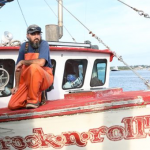
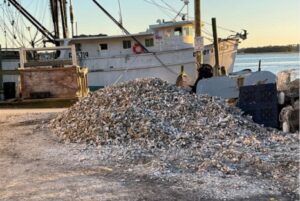


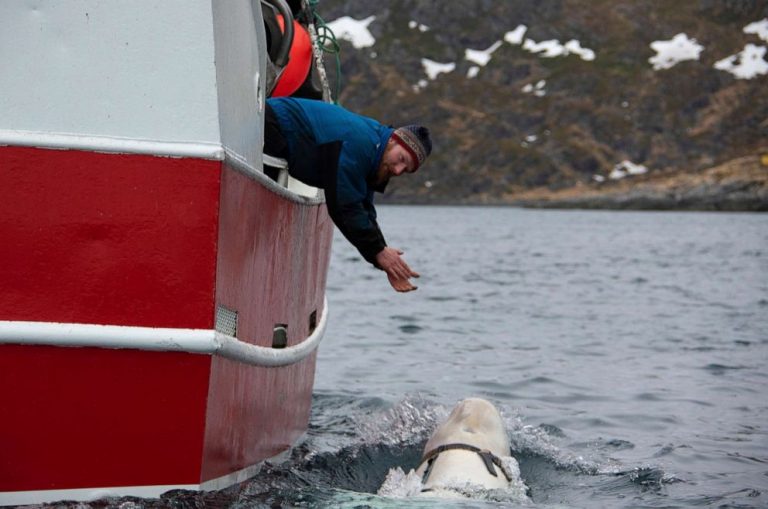


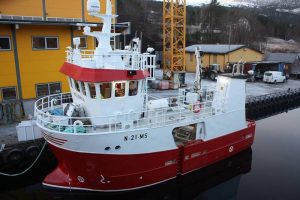


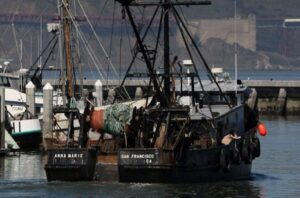
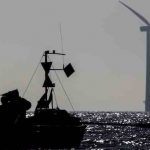





Well said and I hope everyone that clicks onto FISHERY NATION reads your in-depth story on what offshore wind is really all about, and it surely is not saving the environment……